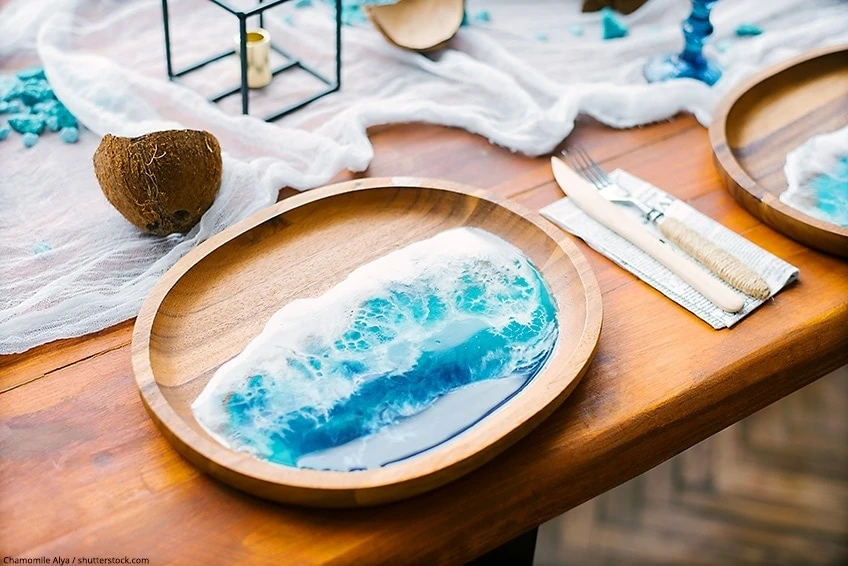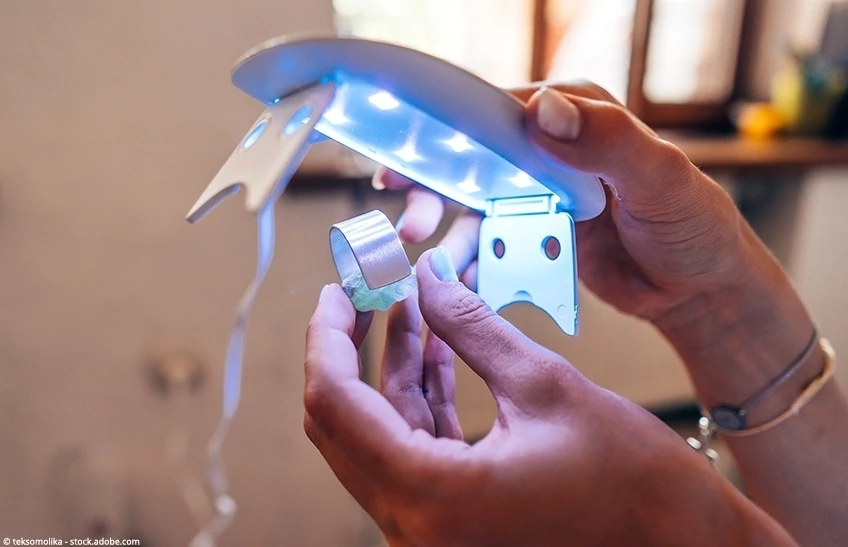What are the Different Types of Resin – Different Epoxy Types
This post may contain affiliate links. We may earn a small commission from purchases made through them, at no additional cost to you. You help to support resin-expert.com
Resin is a highly versatile product, as it has a number of uses. It can be used as an epoxy. It can also be used to be molded and formed into a desired shape or structure. Resin also has the ability to blend in and camouflage as the material it is adhering to or working in conjunction with.
Table of Contents
What are the Different Types of Resin?
There are many different types of resin and each has its own properties. The types of resin which we will be discussing are as follows, Epoxy Resin, Uv Resin, Polyester Resin and Polyurethane Resin.
The majority of resins are made up of two elements, namely the base resin and a catalyst (which is a hardener). Combining the two elements results in a chemical reaction which allows the resin to set. Uv resin however only has 1 component, as the chemical reaction only starts when exposed to uv light.
Epoxy Resin
Epoxy resin is a versatile form of resin, having a variety of uses. This makes it the go to resin for a large number of projects. It is also a very durable form of resin.
Pros
- The biggest pro of types of epoxy resin is that they are all relatively inexpensive and easily obtainable, of all the types of resin, epoxy resin also has the widest selection of uses.
- The different type of epoxy resin is also all long lasting and are very easy to customize.
Cons
- The different type of epoxy resin is not as useful in high humidity environments, as they need a dry atmosphere to set and dry sufficiently.
- Epoxy resin has a tendency to yellow when exposed to continues direct sunlight.
Application
The application process for Epoxy Resin can be determine by the project you are tackling. The main process is to apply a few layers, allowing too dry in between each application. All types of epoxy resin dry relatively quickly. It is important to note that after the second coat is applied no more sanding should be done between the additional coats.
Casting Resin
Casting resin is a type of epoxy resin which has a very low viscosity. It is a particularly useful type of epoxy resin thanks to its thin consistency. It must be noted however the thin consistency does increase the overall drying time.
Casting resin can be used to fill a hollow area or void in a piece made of wood or other materials. It can also be used to completely submerge an item in the casting resin thereby preserving the item.
Coating Resin
Coating resin is a type of epoxy resin which can be used to effectively coat an item or surface and in doing so provide a heavy-duty protective finish. The coating resin provides a high gloss finish. It can be used to seal the likes of concrete floors.
UV Resin
Uv resin is similar to epoxy resin but differs in the overall setting process and chemical structure. While epoxy resin has two parts which need to be combined in order to set uv resin is already combined. Uv resin sets quickly as the setting process is activated when exposing the product to uv light.
Pros
- UV resin has a faster drying time than other types of epoxy resin.
- As the relevant parts are already combined, there is no need to mix as with other types of epoxy resin.
- As the product only begins to set when uv light is applied to it, this allows you a longer working time with the product.
Cons
- Uv resin unfortunately has a very limited shelf life, and expires within 6 months. This is of course when it exists in its unset state.
- You require a uv lamp in order to set the product, which can be a costly piece of equipment
- Compared to other types of resin, uv resin is relatively expensive.
- The biggest disadvantage is uv resin’s limited application as you can only pour thin layers and cannot cover a large area.
Application
The application of uv resin is very simply as you can choose to pour it over the item you wish to coat. You can also tint or color the uv resin before use. The most significant element is how one dries or sets the uv resin. This particular type of resin will only set correctly, if exposed to uv light. The length of time required to set the item is all dependent on the size of the piece and the thickness of the resin.
Polyester Resin
Polyester resin, while similar to types of epoxy resin can be used to construct models. You would be most familiar with its use in building boats, swimming pools and ponds. Polyester resin has a fibers structure and is known for being water resistant and its overall strength.
Pros
- Polyester resin is very affordable.
- When using any type of polyester resin, the drying or curing time can be determined by yourself, depending on the amount of hardening solution used when formulating the resin.
- As previously mentioned, polyester resin is water resistant.
Cons
- Unfortunately, all types of polyester resin are known for their pungent smell.
- The overall mixing process can be more technical and therefore more difficult than other types of resin, as it is up to you to determine the desired levels when combining the two elements.
Application
Like types of epoxy resin, you are required to combine the two elements in order to utilize the polyester resin. This process involves adding the hardening solution. It is important to measure out the two parts to ensure the correct consistency, and to ensure sufficient hardening has been added. When combining the two parts be sure to mix thoroughly to avoid any of one solution settling at the bottom of the container.
Once completed the mixture can then be used to either make a mold or to laminate. When making a mold, ensure to apply the coats in one direction to avoid any air bubbles when applying the layers to the glass fiber.
When using this type of resin to laminate, you initially apply a layer of resin to the relevant surface, and then layer the fiber glass sheet on top, before applying another layer of resin. This process makes the fiber glass mat flexible, allowing it to be shaped with ease.
Polyurethane Resin
Polyurethane resin like polyester resin can be used for casting molds. Polyurethane resin is a very versatile type of resin as it can be used to create an assortment of products. This is thanks to its easily manipulated properties. It is a very durable resin that becomes very hard when set through application of heat.
There are many different types of polyurethane resin, which are utilized in a variety of industries. For example one can find many polyurethane products within appliances, and is also widely used within the automotive industry.
Pros
- This particular type of resin is very heat resistant, once it has been cured or set.
- When setting there is only a very small amount of shrinkage.
- Polyurethane resin can be easily mixed, as it has very good flow properties, this also makes it easy to use when filling an area or mould.
- The setting time and hardening of the polyurethane resin is very fast.
- The polyurethane resin can be used an electrical encapsulate.
Cons
- Polyurethane resin is highly sensitive to moisture which can result in reactions such as foaming.
- In order to ensure the polyurethane resin is not impacted by uv light, an additional additive has to be used.
- Once you have set and cured the resin you are unable to weld it.
- During curing, a very unpleasant odour is given off.
- Epoxy resin has a stronger adhesive property than of polyurethane resin.
Application
The many processes of applying polyurethane resin are as varied as the different uses for the product, for example the application of polyurethane resin when creating a mold casting, the two elements are combined before adding the product to the mold. Polyurethane resin can also be applied to surfaces to decrease the slipperiness of the surface.






